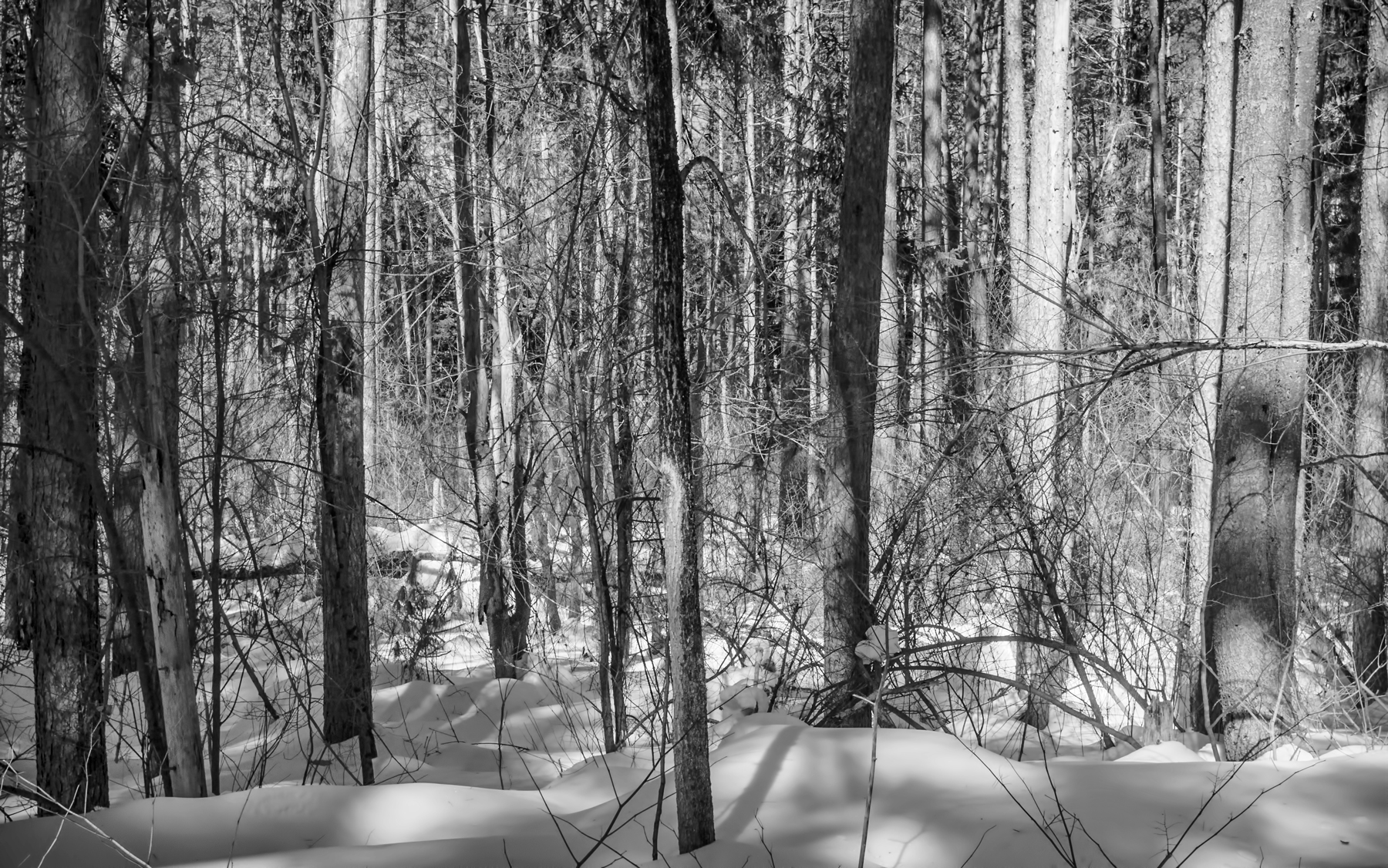As I said in an earlier post, several years ago I resumed shooting and printing a lot. With some review at the Worcester Craft Center I went back out with my cameras and into the darkroom with less pain and more joy than ever. I changed formats from 35mm to 645 medium format when I bought a used Bronica ETRS.
There are parallels in digital photography. Point and shoots in general make nice images fairly automatically; that’s a big selling point for them. However, trying to edit nice looking images for fine art prints is not always successful.
 A combination of factors may account for this. if we say a pixel on a camera sensor and a grain of silver on a negative are equivalent, 20MP or more is approximately equivalent to the resolution of a 35mm film negative. The size of a small camera sensor in a low price camera might be 1/2.5″ or smaller; that is about 2 percent as big as a 35mm negative. The electronic noise that leaks from all those pixels on a small surface area can be thought to be equivalent to grainy film.
A combination of factors may account for this. if we say a pixel on a camera sensor and a grain of silver on a negative are equivalent, 20MP or more is approximately equivalent to the resolution of a 35mm film negative. The size of a small camera sensor in a low price camera might be 1/2.5″ or smaller; that is about 2 percent as big as a 35mm negative. The electronic noise that leaks from all those pixels on a small surface area can be thought to be equivalent to grainy film.
Film as a rule records a wider dynamic range of tones than a camera sensor. More contrasty imagery with detail and texture in both shadow and bright zones was possible in a single click of the shutter with film. Electronic noise has been suppressed or reduced in successive generations of digital cameras; and dynamic range has improved–greatly improved in HDR captures which combine multiple exposures for dark and bright regions in the frame.
Another consideration is the file format in which a digital camera saves its image capture. Many point and shoot and fixed lens cameras save in a lossy compressed format called JPEG. In simplified terms, the file is saved in a smaller space by first applying all the optional and automatic camera settings, and then tossing out other data that the sensor recorded but is not required for the picture. It’s like we made a print, and threw out the negative. We can still make some editing choices, but not as many.
The situation may be remedied in the digital world with the right choices. Get a larger format camera. Cameras have been manufactured to utilize many sizes and formats of film from 8mm x 10.5mm frames on disc camera film to 8″ x 10″ large format cameras and even bigger ultra-large formats. In the digital market, point and shoot and fixed lens camera sensor sizes range from say 2 percent to 100 percent the size of one frame on a roll of 35mm film. Their prices range around $80 to $2700 roughly in parallel with sensor size. Lower priced, higher sales volume cameras benefit from economies of scale; higher priced, lower sales volume cameras benefit from better build quality, more durable components, and superior optics.
We get the equivalent to a film negative in cameras that are capable of saving images in camera raw format. Everything the camera sensor recorded gets saved in raw. Some fixed lens cameras have this feature, but many only save in a compressed format such as JPEG. I’ll work up a selected list of camera sensor sizes and post it next time; and another list of selected fixed lens cameras that feature raw capability after that.